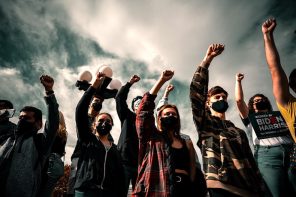The religious right is crowing over a new demographic study which, they say, shows that only 1.7 percent of the U.S. population is gay or lesbian—putting to rest the long held belief that LGBT people represent about 10 percent of the population.
“Time to stop getting pushed around by such a tiny minority,” asserted the American Family Association’s Bryan Fischer. But, the Associated Press story that Fischer and his pals are celebrating misrepresents the data. In fact, the study [pdf], conducted by the Williams Institute of the UCLA School of Law, actually reports there are “approximately 9 million LGBT Americans,” which means that LGBT people represent about 4 percent of the population.
Why the discrepancy? The AP pulled the 1.7 percent figure from another part of the report where 1.7 percent of those who identified as LGBT reported they were bisexual. It’s almost shocking that the AP would misrepresent the poll, until you realize who they called for reaction: Peter Sprigg from the Family Research Council who took the bisexual numbers as a “problem” for the gay community because “it undermines the idea that being born homosexual is an immutable characteristic that can’t be changed.”
No, Peter, what that means is that some people are born bisexual and are more fluid in their sexual orientation. So, really, it presents very little problem for the “gay political movement” since the “B” in LGBT accounts for our bisexual brothers and sisters.
While the religious right celebrates the shrinking size of the LGBT community, the study’s author, Gary Gates, sees the results as a positive for the LGBT community:
“I guess I hold to a belief that, in the end, good science will be helpful to the community. The stereotype of the community as rich, white, male, and urban is nearly as pervasive as the 10% figure. The emergence of quality demographic data that includes questions about sexual orientation and gender identity has allowed us to highlight the diversity of the community in ways that we’ve just not been able to do in the past. Getting sound information about the LGBT community is dependent on the willingness of surveys to ask sexual orientation and gender identity questions (and perhaps show that only about 4% of the population identifies as LGBT). On the whole, I see that as a net positive and absolutely worth the risk.”
Gates’ overall goal, after all, is to get more and more demographic information on the LGBT community so real numbers can be extrapolated from the data. As it is right now, it is impossible to get a true count of gay and lesbian people because many surveys, including the U.S. Census, don’t explicitly ask if respondents indentify as gay, lesbian, bisexual, or transgender. Putting the question on every form would still not solve the problem, though. Many LGBT people remain in the closet and would never tell a demographer the truth even if it were on every data form they filled out.
In addition, identity is a matter of one’s own personal opinion. Gates found that 19 million people—around 8 percent of the population—say they have engaged in same-sex behavior—so they act gay or lesbian but don’t identify as such. But, wait, there’s more, “nearly 25.6 million Americans (11%) acknowledge at least some same-sex sexual attraction.”
So, if we take the data as a whole, some 4 percent of the population may embrace the label of gay, lesbian, or bisexual—but if we judge the numbers on the basis of those who have engaged in same-sex behavior or are considering such a thing—that 10 percent number holds.
But in the end it really doesn’t matter how many LGBT people there are. Denying equal rights to even one human being should be an abomination in anyone’s book, whether they’re religious are otherwise.




